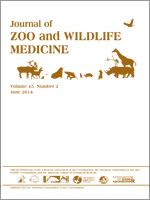Contraception is necessary to manage zoo animal populations and to be able to house animals in groups without producing additional unwanted offspring. In felids and canids, an association between exposure to progestins and the occurrence of endometrial and mammary gland pathology has been documented. Therefore, the Association of Zoos and Aquariums (AZA) Wildlife Contraceptive Center recommends the use of deslorelin acetate for long-term contraception in carnivores. Return to cyclicity after deslorelin treatment has been variable; some individuals show ovarian suppression for long periods after the expected end of the deslorelin efficacy. In an attempt to reduce the time to reversal, techniques to locate and remove previous implants are being developed. This report documents the successful implementation of high-frequency ultrasonography in lions (Panthera leo) to locate and direct surgical removal of multiple deslorelin implants placed at least 2 yr previously as well as the return of follicular activity in both females at 7 months post-removal of implants.
How to translate text using browser tools
1 June 2014
LOCATION AND REMOVAL OF DESLORELIN ACETATE IMPLANTS IN FEMALE AFRICAN LIONS (PANTHERA LEO)
Anneke Moresco,
Liza Dadone,
Jason Arble,
Eric Klaphake,
Dalen W. Agnew
ACCESS THE FULL ARTICLE
Adverse effects
carnivore
contraception
deslorelin
felid
gonadotropin releasing hormone agonist
reversal





